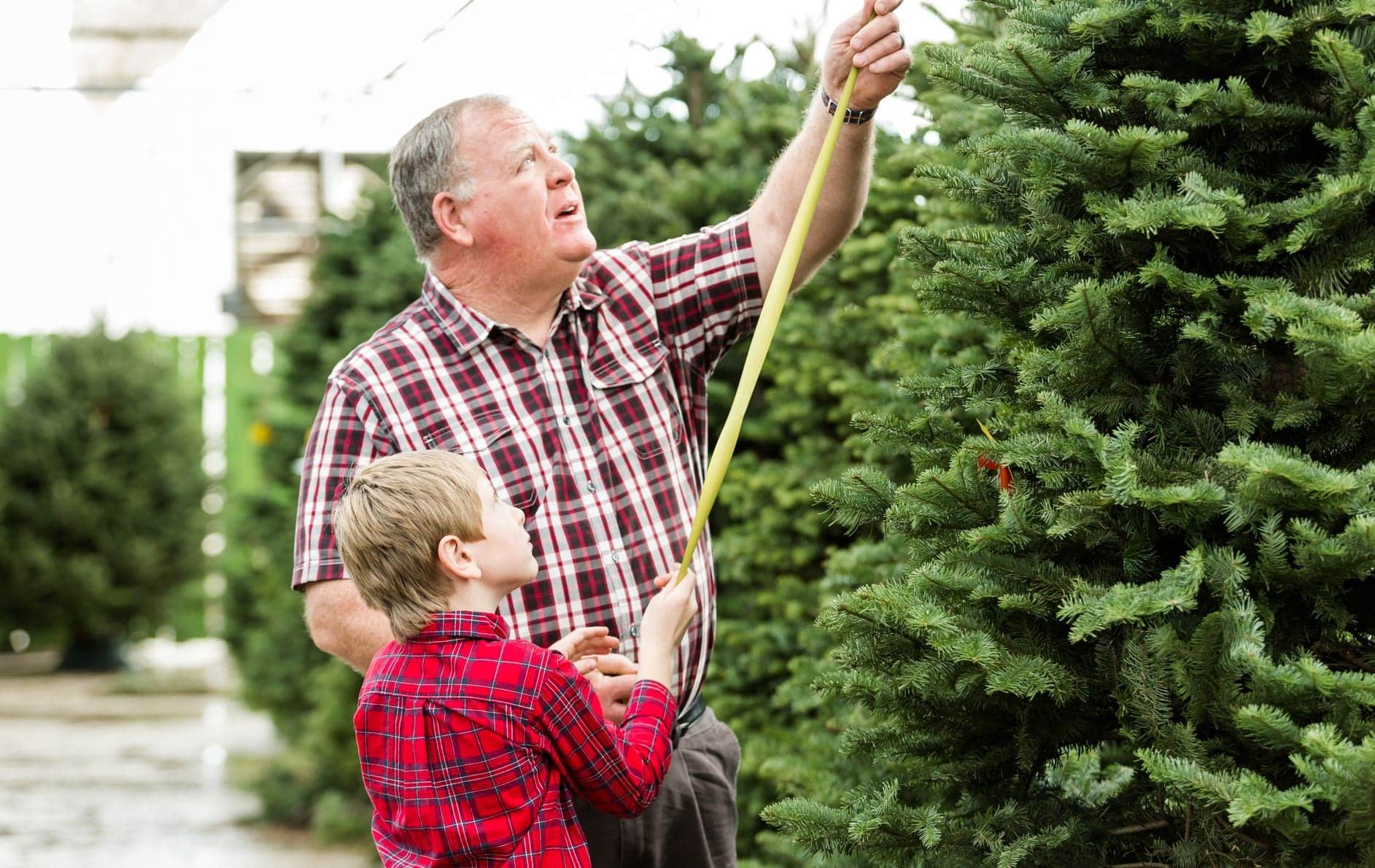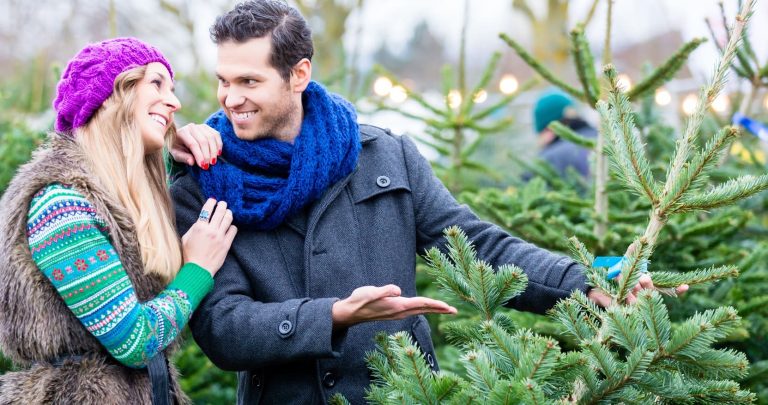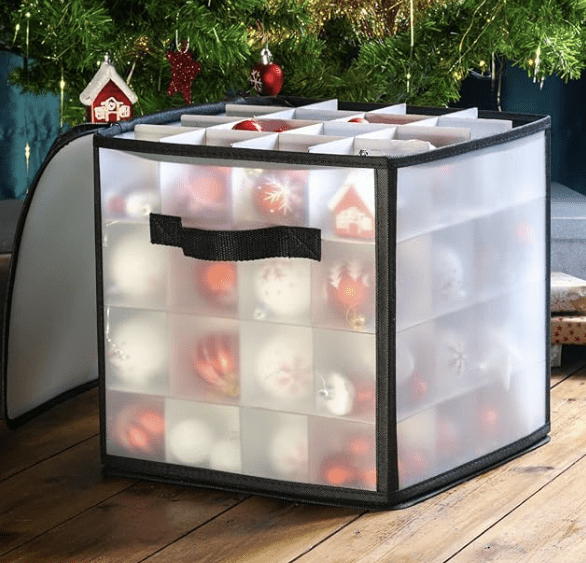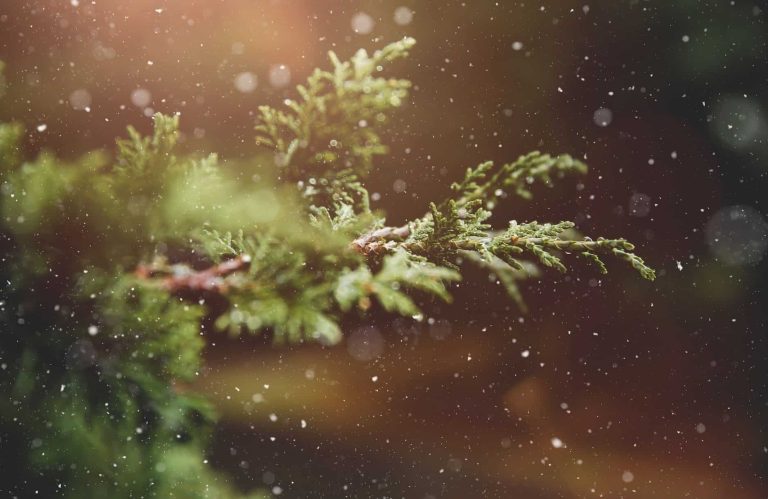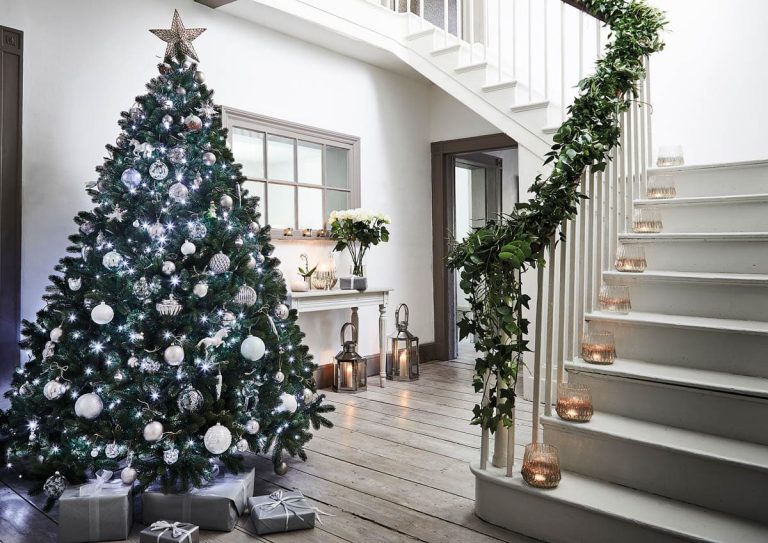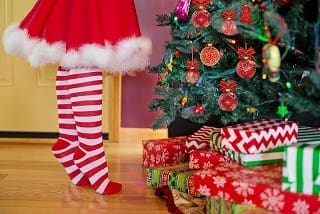How do I measure a Christmas tree?
Christmas trees come in all shapes and sizes which is why it is important to measure the tree you want to buy.
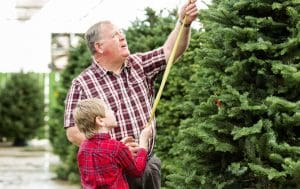
But before heading out, you should carefully measure the distance from the floor to the ceiling in the room where you are going to place your tree.
However, that figure isn’t how tall your tree will need to be. That’s because:
- You will need to consider the tree’s stand
- Consider how tall your tree fairy or tree topper is when added.
Measuring a Christmas tree is a simple process and when you go shopping you will know for certain if the tree you love is just too tall for your room – or just the right size!
See below for more detail.
Why measuring a tree is important
There are a few reasons why measuring a tree is important, they include:
- . Plus, you’ll have to struggle with your tree in the car once more…
- Measuring properly can help you choose a tree that is the perfect size for your home.
Another important reason is that you will be able to compare prices between real Christmas tree sellers. This will be crucial information when buying online since you will be paying per foot of tree.
Prices do vary so it is always worth shopping around to get the best price – but remember that trees take years to grow, and you’ll need a quality tree to see you through the festivities.
This is probably the point to highlight that there is no standardisation across the real tree selling sector – as you will learn below. But with the and width measurements you will be able to start your search.
And with the height and width, you’ll need to consider how full or bushy you want your real Christmas tree to be.
As a comparison, when buying an artificial Christmas tree, you will be paying for the tree’s hight – and also for the number of ‘tips’. That is the number of branches you want on the tree and with a real tree, understanding the different types of tree, whether that is a Nordmann fir or Norway spruce, will help ensure you get the tree you will love.
It’s also worth bearing in mind that you could invest in an eco-friendly Christmas tree, or even
How to measure the space for your tree
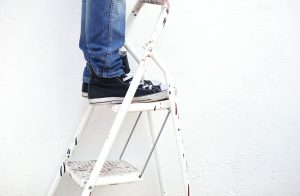
Here are some easy tips on how to measure for a real Christmas tree – you will probably need someone to help you to hold one end of the measuring tape while you find out the measurement and note it down.
The following materials are required:
- Measuring tape
- A step ladder
- Pen and paper.
If space is a little tighter and you don’t want to take a chance that you’ll need to trim the top of the tree to get the tree to fit consider these top tips:
- Use the step ladder (or a chair) to measure the vertical space between the ceiling and floor with your measuring tape.
- From the maximum height subtract 15-30cm for a tree topper (stars tend to be around 15-23cm and figures can be 30cm or more). If you know exactly what you are using then measure it before you go tree shopping for an accurate number.
- Then you’ll want to subtract 10-15cm to cover the tree stand which will elevate your tree by a few cm and also to provide a little clearance at the top.
50cm is a safe guide, but if you have limited space and want to maximise it (or are going for a very ambitious sized tree) take a moment to do the calculations. Returning a tree is going to be a hassle and chopping the top off when you’ve likely paid a premium price for a big tree will be heart breaking.
- Don’t forget that you will also need to how wide the available space is. First, move the furniture where the tree is going and measure it. This will help ensure that the width of the tree will fit nicely where you want without dominating the room. Even, if the tree is tucked into a corner you’ll want a little bit of clearance around it – so once you’ve measured the width of the area subtract 30cm and this will give you a maximum width. Width can vary a lot between different types of trees and also how they have been cared for – so best not to get caught out with a tree that is a long way from the ceiling, but which takes up most of the available floorspace in your living room!
—oooOooo—
Measuring a Christmas tree
We enjoyed this YouTube video from Valfei Products who explain how to measure a tree – and it’s not always to the very top of a tree! There’s a lot to learn here if you have never measured a tree before – or are worried that your idea of a 6ft tree, for example, is nothing like a retailer’s measurement!
—oooOooo—
Choose the right tree height
Once you have measured the space where the tree will go, you should consider if the space is less than:
- 4-. A smaller potted tree is ideal for a tabletop.
- 5 – 5½ Ft: A small living area
- 6 – 6½ Ft: Suitable for a home with a low ceiling
- 7 – 7½ Ft: A nice choice if you have 8ft or 9ft ceilings
- 8 – 12 Ft: Great for rooms with high ceilings.
Important advice before you compare real Christmas tree prices

He told Christmas.co.uk: “One thing to beware of when comparing prices is that some large wholesalers have decided to regrade, re-tag or change their method of height measurement.
Essentially, some tree sellers are measuring from the butt, that is the bottom of the tree, and then to the top of the main branch that sprouts up from the tree on its own. Others will measure from the butt of the tree to halfway up this sprouting branch since this may be cut by the buyer to ensure it fits into their room. This may mean the difference of several inches – but could be crucial if you have measured your ceiling height and don’t want the hassle of reducing the length of the terminal leader so the tree will fit.
Ian adds: “If you bought a particular colour tagged tree last year, you might find that the same colour tag and grade is 6″ – 12” smaller this year, but the price is just the same. We are still using the traditional method of measurement.
“Check before you buy. Caveat emptor!”
Ian continues: “I make the point about the size to illustrate that there are two methods of measuring being used and to encourage customers to check which one is being used when comparing prices.
“If I sell a 6-7ft tree, it will be measured from the base to halfway up the top leader. This means it should be at least 6’6″ tall and could be up to 7ft 6” tall.
“A tree measured from base to tip will be an exact measurement but never any taller.
“Often our 5-6ft trees are touching 6ft tall but still sold as 5-6ft.
“Some other suppliers will only just be 6ft but sold as 6-7ft.”
Ian says: “So, our 6ft trees may appear more expensive than other suppliers’ 6-7ft trees but ours will be bigger so customers get more for their money!”
—oooOooo—
How to choose a real Christmas tree video
It’s also worth watching this YouTube video from Howcast – and though it is about how to choose a real Christmas tree, the importance of measuring your room first is highlighted. The video also stresses you need to take into account the tree stand and tree topper.
—oooOooo—
Where to place your real tree
Another important step before you dash off to the Christmas tree seller, is to think about where you are going to place your tree.
Not only do you need the space but where you put a tree might also dictate which tree you choose.
To help, we look at some of the popular places people choose for placing their tree:
- Living room: The most popular area will be the focal point of festive fun and that is in the living room. You may have to move furniture and you’ll need to place the tree to an electrical socket. Be wary of pets jumping into the tree so if it does topple over, no-one will be hurt.
Best tree: Nordmann fir or Norway spruce – the needles on this tree will help deter pets!
- Dining room: While it may not have a lot of foot traffic, a dining room is where everyone will gather on Christmas day. You could choose a small tabletop Christmas tree or even a potted tree.
Best tree: Be different with a blue spruce or Noble fir.
- Hall: If you have a large hall, a small Christmas tree could be a great way to welcome guests.
Best tree: A potted Christmas tree or a lodgepole pine – put plenty of decorations on.
- Bedroom: There is a growing trend to have more than one tree in a home and some people add them to bedrooms – particularly a child’s bedroom.
Best tree: You can pre-lit real Christmas trees which will work well or opt for a potted tree for the ease of getting it into a bedroom.
The practicalities of your real Christmas tree

Visibility – A Christmas tree should be placed in a spot where it can best be seen. This might be the centre of a room or in a cosy corner.
Accidents – Keep your Christmas tree away from doorways or walkways to avoid accidents.
Presents – Make sure to save extra room in your presents underneath the tree!
- Furniture – Rearrange or remove some pieces of furniture to make room for your tree. If you want to keep your existing furniture arrangement, choose a slim or tabletop Christmas tree.
- Light – Let natural light into your room to make it feel more welcoming and brighter.
- Cables – To avoid any unsightly extension cords that may cause safety hazards, position your tree near an electrical outlet. You will be able to decorate your tree with lights the easy way!
- Heat – Keep your Christmas tree safe by placing it away from heat sources such as radiators, fireplaces, and candles.
To measure the height of the tree
The height of a Christmas tree is typically measured by many retailers from the ground to the top of the tree, while the width or girth of the tree is measured at its widest point.
This information is crucial when deciding where to place the tree in your home.
To measure the height of the tree, use a tape measure or string – or yarn. You will need to ensure that the tree is standing straight before taking any measurements.
You could lay the tree on the ground to measure the length/height accurately but ask the seller first in case the ground is muddy.
Place the end of the tape measure at the base of the tree and extend it up to the top of the tree. You might need to take someone with you, but the tree seller will understand why you are measuring the tree for accuracy.
If you don’t have a tape measure to hand, then string or yarn is an ideal substitute.
If you are using a tape measure, simply read the measurement on the tape and if you are using string or yarn, measure the length of the string. You could also simply mark on the string – for example, tying a knot – how high the tree is and use the string in your home to calculate the height.
Also, the height of the tree will dictate how many decorations you can place on it.
To measure the width or girth of the tree
To measure the width or girth of the tree, wrap a measuring tape or a piece of string around the tree at its widest point.
This measurement is important if you need to make sure your tree will fit through a doorframe or other space in your home. Most people will keep the netting on until they get their tree into the house – but you’ll need to appreciate removing the tree after Christmas without the netting and without damaging cherished photographs and scratching walls as you drag back outside.
If you use string for this measurement, you will need a measuring tape to determine how wide the tree is.
Be aware that some sellers will have their trees in netting already so you will have to take their measurement and hope it is accurate.
What to do once you have measured your tree
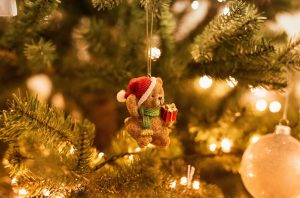
Also, the height and width of the tree will determine how many lights and ornaments you can put on it.
If you have a small tree, you may want to consider using mini lights. These are much smaller than traditional Christmas lights and will not take up as much space on the tree. You can also use fewer lights on a small tree.
If you have a large tree, you will want to use more lights. You may also want to consider using bigger ornaments. Keep in mind that the larger the tree, the more expensive it will be to decorate.
No matter what size tree you have, there are ways to make it look its best.
By taking the time to measure your tree and then choosing the right size lights and ornaments, you can create a beautiful display that will be enjoyed by all.
How do I measure a Christmas tree?
Now that you know how to measure a Christmas tree, you can start planning your festive decorating.
With the right size lights and ornaments, you can create a beautiful display that will be enjoyed by all.
So, get out your measuring tape and get started!

